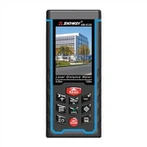What are the effective values and true effective values of multimeter?
The magnitude of alternating current changes with time, and the instantaneous value (at a certain moment) changes between zero and positive and negative peaks, and the maximum value is only an instantaneous value, which cannot reflect the working ability of alternating current.
Then the concept of effective value is introduced, which is defined as:
Effective value: defined by heat generation (power). An alternating current generates heat through a resistor and another direct current passes through the resistor. If the heat generated in the same time is equal, then the direct current voltage value is the effective value of this alternating current voltage.
True RMS: the definition of RMS is defined by heating, but it is difficult to measure RMS voltage in measuring instruments in this way. Therefore, in most voltage measuring instruments, such as multimeters, the measurement method is not based on the "heating" defined by RMS. One type of multimeters takes sine waves as reference, and obtains the RMS by the relationship between the RMS whose peak value is twice the root number (or by the average value). The RMS obtained by this method is only for sine waves. The voltage value of another kind of multimeter is calculated by the square of the effective value of DC component, fundamental wave and harmonics. This value is similar to the definition of effective value, and there is no requirement for the shape of waveform. In order to distinguish this kind of effective value from the instrument that obtains effective value through sine wave, this popularity is called "true effective value" in measuring instruments.
Root mean square value: another name for effective value (which should be true effective value on the measuring instrument table).
The effective value of multimeter usually refers to one of the following three situations:
1. Calibration average method, which is also called corrected average, or rectified average calibrated to effective value. Its principle is to change AC signal into DC signal through rectification and integration circuit, and then multiply it by a coefficient according to the characteristics of sine wave. For sine wave, after multiplying this coefficient, the result is equal to the effective value of sine wave. Therefore, this method is limited to sine wave test.
2, peak detection method, through the peak detection circuit, to obtain the peak value of AC signal, and then according to the characteristics of sine wave, multiplied by a coefficient, for sine wave, multiplied by the coefficient, the result is equal to the effective value of sine wave. Therefore, this method is limited to sine wave test.
3. True RMS method, which uses a true RMS circuit to convert an AC signal into a DC signal and then measure it. This method is suitable for testing the true rms of arbitrary waveforms.
Most multimeters use the first two methods. And the frequency of the signal is greatly limited.
For alternating current, its voltage is a changing waveform. Usually, we describe its voltage value as its effective value. As we said, with 220V power supply, its peak voltage is more than 310 volts, and its peak-to-peak value is twice as high as 600 volts.
The effective values of electromotive force, voltage and current of sinusoidal alternating current are represented by e, u and i respectively. The electromotive force, voltage and current of alternating current are generally referred to as the average of its effective value. The rated values marked on AC electrical equipment and the values indicated by AC meters are also valid values.










